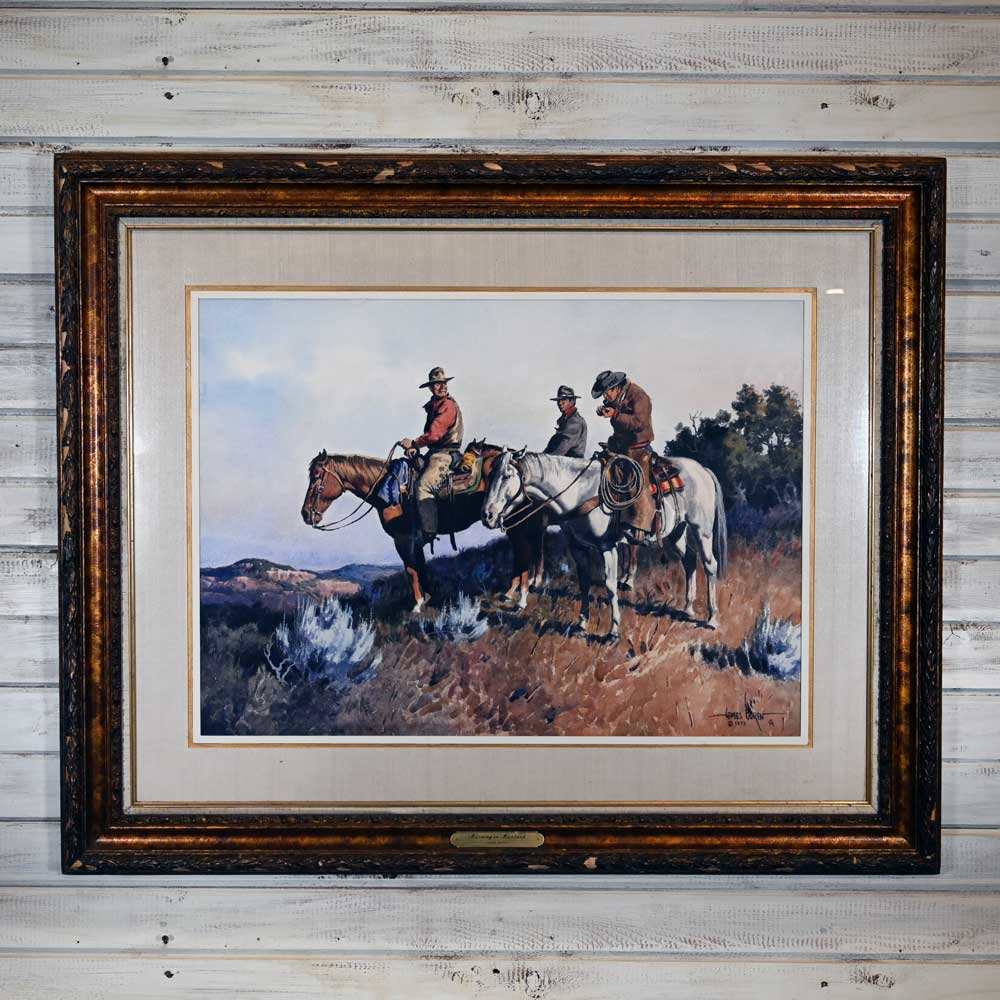
Edward Borein (1872-1945)

Born in San Leandro, California, Edward Borein became one of the most popular artists of western scene painting, equally adept at ink drawing, watercolor, and etching.
He was raised in San Leandro, a western cow town, in a family where his father was a county politician. Edward had many childhood memories of herded cattle and their cowboys, which he began sketching at the age of five. He was educated in the Oakland, California schools, and at the age of 17 began working on a ranch near Oakland and then drifted and sketched as a working cowboy throughout the Southwest, Mexico, and Guatemala. It was said that he practiced his art on anything he could find from bunkhouse walls to scraps of paper.
At age 19, he enrolled at the San Francisco Art School, his only formal art training, and there he met Jimmy Swinnerton and Maynard Dixon who encouraged him in his art career. The first person to purchase his work was Charles Lummis, editor of The Land and Sunshine magazine in California, and the two became life-long friends. Borein and Lucille Maxwell were married in the Lummis home.
Borein, a typical westerner in dress and manner, also became close friends with Charles Russell, actor Will Rogers, and President Theodore Roosevelt. Borein often traveled north to visit Russell in Great Falls, Montana and to travel among Indian tribes. In 1899, Borein visited Arizona while returning from Mexico. By 1902, he was a successful illustrator in San Francisco for the San Francisco Call, and in 1907 to enhance his illustration skills, went to New York to learn etching techniques. There he enrolled in the Art Students League and was a student of Child Hassam. In the theatre district, he opened a studio that became a gathering place for ‘lonesome’ westerners such as Charles Russell, Will Rogers, Olaf Seltzer and Oscar Borg. But Borein did not feel at home in New York, so he moved to Santa Barbara, California in 1921. This was a final move.
He and his wife built a Hopi-style home, and he taught at the Santa Barbara School of the Arts until his death, and also turned increasingly from oil to watercolor painting. From his studio, which again attracted many of his friends, he depicted Indians, cowboys, and California ranch life and was financially successful.
Borein did spend some time in the Sheridan and Big Horn, Wyoming area doing art projects for Bradford Brinton and the Gallatin Family. Brinton was somewhat of a patron of Borein and the Brinton Museum in Big Horn has one of the largest collections of Borein’s etchings along with watercolors. In the Main House, Borein created india ink drawings depicting cowboys and Indians on freizes that adorn the dining room. Freizes and other artwork were done for the Gallatin Ranch house as well.
